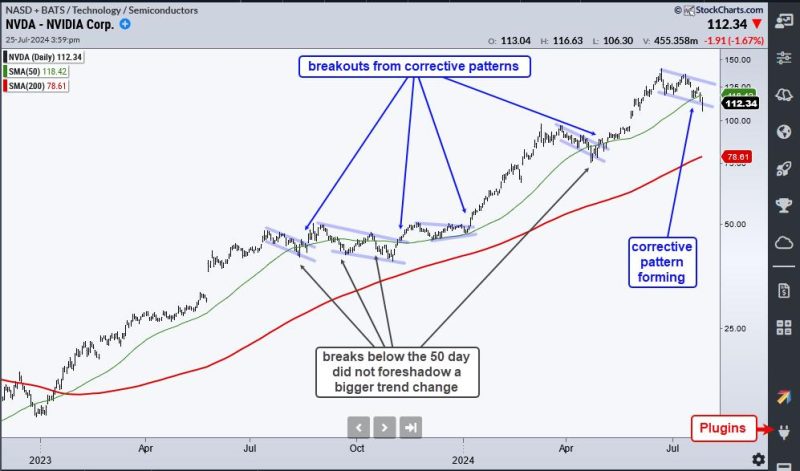NVIDIA, an industry powerhouse in the realm of graphics, semiconducting, and artificial intelligence, recently had its stock drop below the 50-day simple moving average (SMA). The 50-day SMA is a common technical analysis tool used by traders and analysts to identify patterns that may help predict future price movements. It is calculated by averaging a company’s closing prices over the last 50 days. So, does this sell-off of Nvidia’s stock signify a cause for concern, or could it be a window of opportunity for astute investors?
First, let’s dissect the potential threat of Nvidia breaking the 50-day SMA. The 50-day SMA is commonly utilized to recognize short-to-medium-term trends. A stock trading below this average can often signify a bearish trend, potentially suggesting that the stock is undervalued. Therefore, for investors who currently hold the stock, this trend could be a warning sign of a declining phase, an implication that the company’s value is declining. It might also signify a lack of investor confidence, which can trigger a snowball effect of more selling, causing the price to plummet even further.
Market sentiment aside, the actual performance and future prospects of Nvidia should also be considered when evaluating the potential threat. As a leading tech company with focuses in areas such as AI, gaming, and autonomous vehicles, Nvidia is recognized for its innovation and robust growth potential. However, geopolitical factors such as the US-China trade war or global chip shortages may present short-term challenges for the company, potentially justifying a bearish perspective.
On the flip side, Nvidia’s drop below the 50-day SMA could also be interpreted as an investment opportunity. Savvy investors often adhere to the concept of buying low and selling high. Given Nvidia’s reputation as a forward-thinking and resilient tech company, the current stock price drop could be seen as a temporary correction rather than a fundamental flaw. Therefore, this could be a golden chance for potential investors to buy into a blue-chip company at a lower price point before the stock rebounds.
Moreover, Nvidia’s diverse and influential product portfolio that contributes to various industries, coupled with its consistent commitment to research and development, point towards a promising future. From AI-driven data centers and autonomous vehicle tech to gaming GPUs, Nvidia’s offerings are pivotal in these rapidly growing sectors. As such, longer-term outlooks may support the view that this is an optimal time to invest in this tech giant.
Furthermore, the dip below the 50-day SMA could merely be indicative of market fluctuations and doesn’t necessarily reflect on the company’s health or prospects. Seasoned investors understand that the market goes through cycles of volatility and corrections are a natural part of those cycles. It’s essential not to let short-term market volatility obscure the long-term potential of a company like Nvidia.
Ultimately, whether Nvidia’s breach of the 50-day SMA is considered a threat or an opportunity is largely subjective and depends on an individual’s investment strategy and risk tolerance. Short-term traders might perceive this event as a warning, leading to sales and further price drops. In contrast, long-term investors or those with a high-risk tolerance might see this as a buying opportunity, leveraging this dip to build or expand their position in Nvidia. One thing is clear, though: any decision should be based on comprehensive research and a deep understanding of both market conditions and Nvidia’s business operations and performance.




